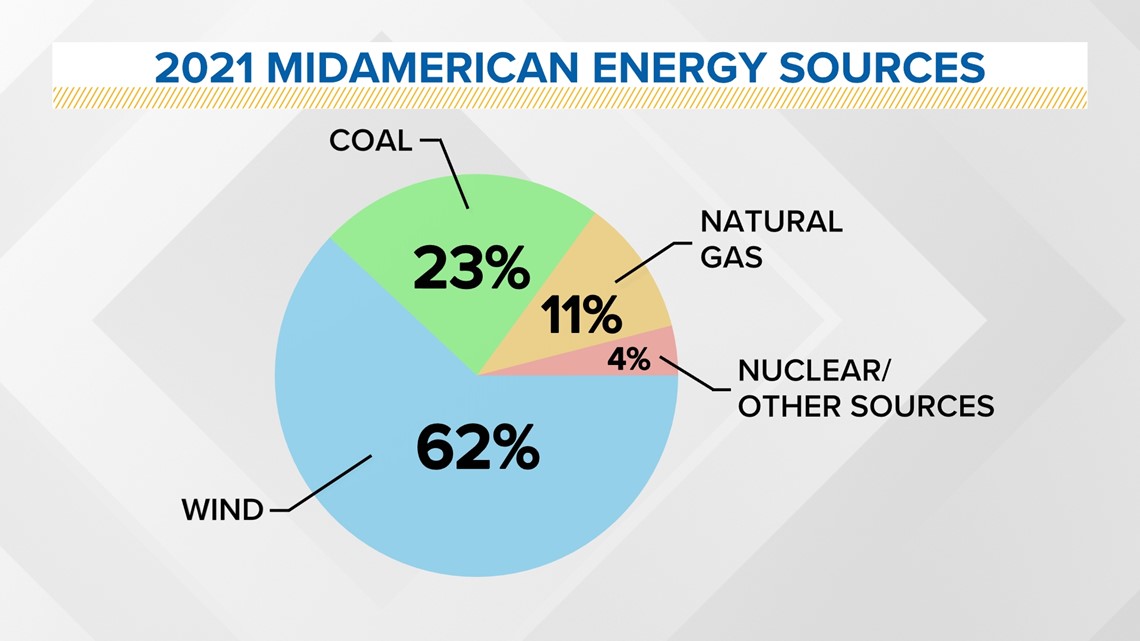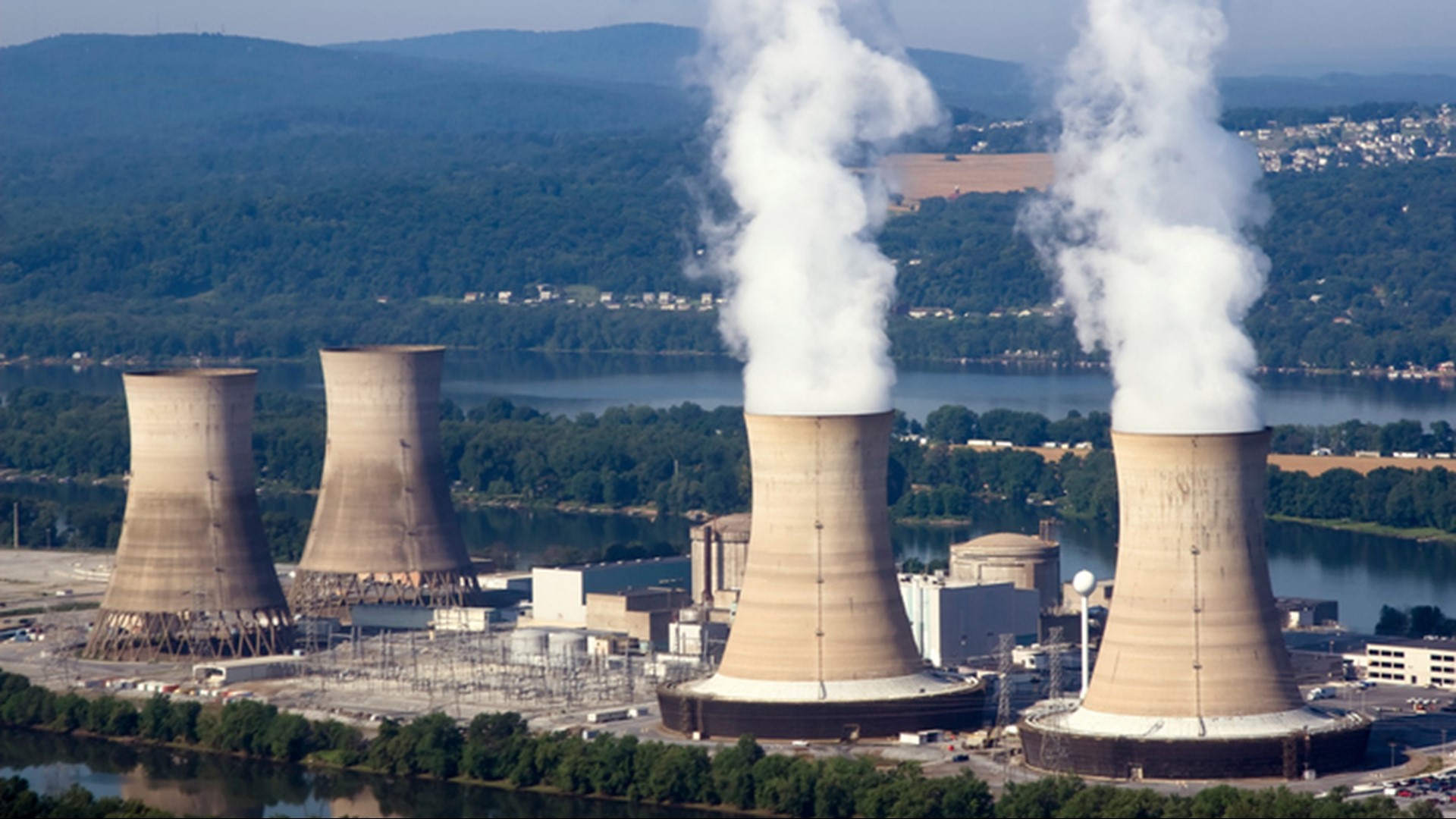DES MOINES, Iowa — Iowa’s largest power provider wants to explore the possibility of using new nuclear power technology to heat and light our homes.
MidAmerican Energy is seeking approval on a $3.9 billion renewable energy project in Iowa called Wind PRIME in hopes of achieving net-zero greenhouse gas emissions.
Along with further investment in wind and solar energy, MidAmerican is looking to use the funds to explore new, green technologies such as energy storage, carbon capture and small modular nuclear reactors.
Since renewable sources like wind and solar do not consistently generate energy, the company is requesting permission from the Iowa Utilities Board to explore these innovative, carbon-free technologies as a baseload power source.
"It's the first step in determining if any would be feasible," said MidAmerican Energy spokesman Geoff Greenwood. "It is not a commitment to utilize one over another or any at all."
In the proposal, MidAmerican requested a decision from the Iowa Utilities Board by October.
MidAmerican has never operated a nuclear facility, but does own a 25% stake in the Quad Cities Generating Station in Cordova, Illinois which supplied just under 4% of MidAmerican's generating capacity in 2021.


Nuclear energy is created through fission, a process where the splitting of uranium creates heat that boils water. This forms steam which spins turbines and generates electricity.
This process emits no carbon dioxide. But safety concerns, high costs and a large physical footprint have stifled its popularity. Now a scaled-down version of this nuclear technology is emerging called small modular reactors (SMRs).
Unlike traditional nuclear plants, SMRs are built off-site which helps save on costs.
“Instead of having to build a huge plan out in the field, you could manufacture most of the pieces of it, like Boeing would an aircraft, in a factory and then send it to site and basically plug it in,” said senior nuclear engineer Tim Cahill.
SMRs have a power capacity of up to 300 megawatts: enough to power up to 200,000 homes. That’s comparable to the capacity of an average U.S. coal plant.
“We're attempting to size these units such that they could effectively be a replacement for these older, dirtier forms of fossil fuel power,” Cahill added.
With nuclear energy, safety is always top of mind. Nuclear accidents are rare, but can happen. Traditional reactors pump water to cool radioactive material, and backup generators are on site to power the pumps when electricity goes down at the plant.
In the case of Fukushima in 2011, the backup generators failed, leading to nuclear meltdown fears.
Because of their size, SMRs rely on natural forces, not pumps, to circulate water. This is a significant safety improvement nuclear energy proponents say increases its feasibility in the U.S.
"I would say the United States is the gold standard when it comes to nuclear safety," Cahill said.
Despite all of this, some environmentalists aren’t convinced nuclear is the way to go.
"We say nuclear power is dirty, dangerous and expensive," said Wally Taylor from the Iowa Chapter of the Sierra Club. "Dirty because of the uranium extraction. Dirty because of the spent fuel that was radioactive for hundreds of thousands of years, and we don't know what to do with it."
The Duane Arnold Energy Center in Palo was the last operating nuclear power plant in Iowa until high winds from the Aug. 10, 2020 derecho caused damage and forced it to shut down.
Now, it will take decades to properly dispose of toxic waste at the site.
The Sierra Club has been fighting against nuclear energy in Iowa since the 1970s, lobbying at the statehouse to prevent nuclear initiatives from moving forward.
"Wind and solar, carbon sequestration through preserving and enhancing forests and other green areas, all of those efforts could be much more effective in reducing climate change than nuclear energy," Taylor said.
This falls in line with what the Intergovernmental Panel on Climate Change says will be most effective in reducing greenhouse gas emissions.
Although there is plenty of uncertainty surrounding the future of nuclear energy in Iowa, supporters say its potential to help reduce climate change shouldn’t be ignored.
"This is generational," said Cahill. "It is sustainable. It is efficient, and it's getting us away from what's causing imminent global climate issues."

